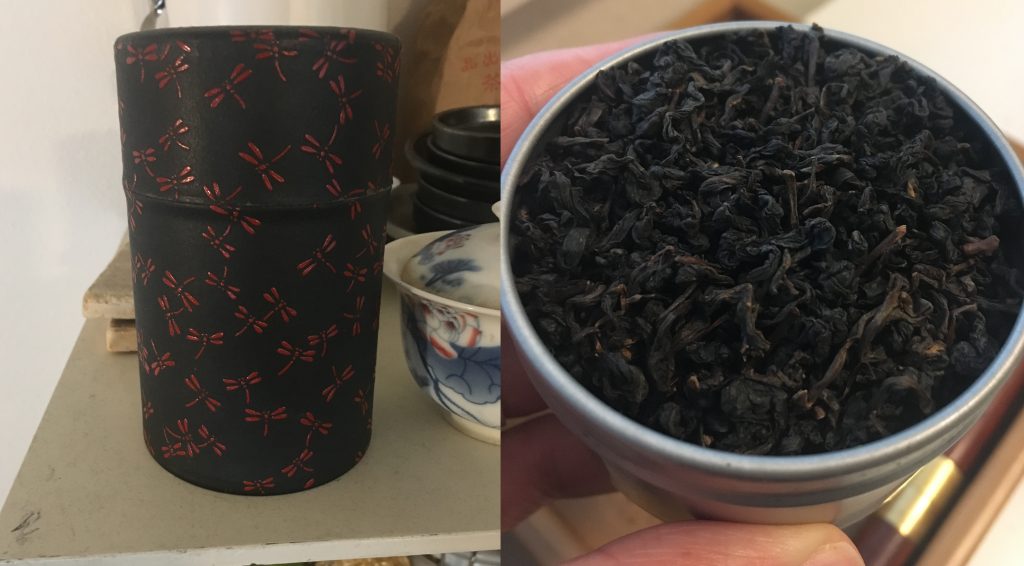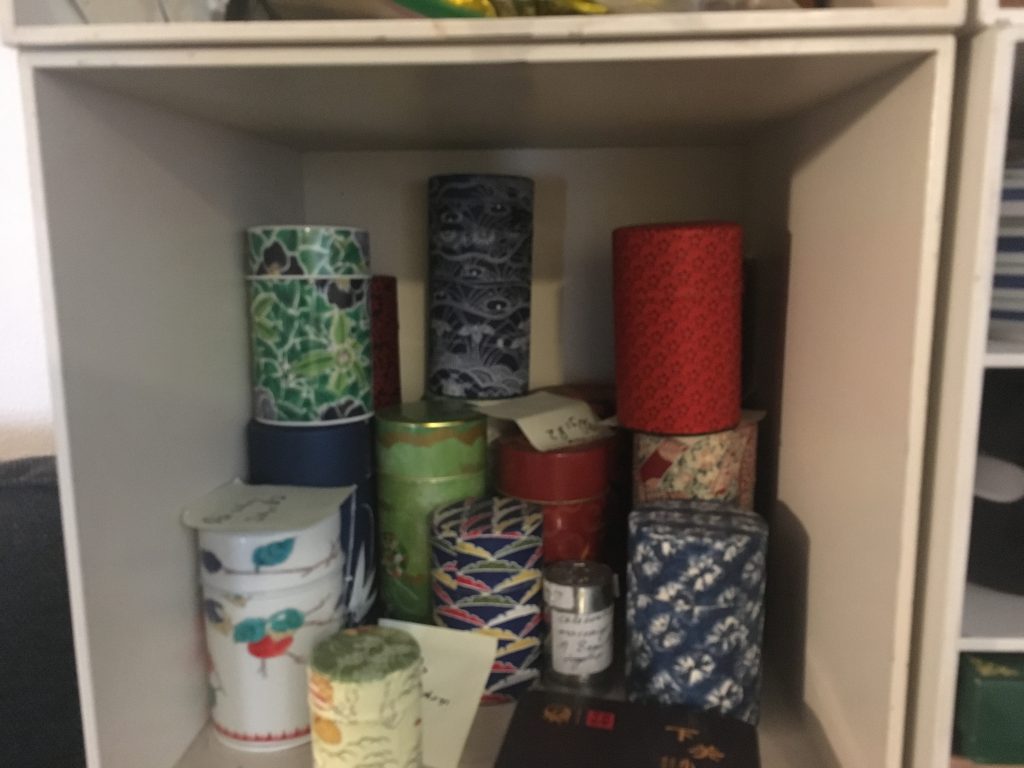Sometimes when I’m sipping a particularly delicious aged oolong, I’ll glance over at my tea fridge and then to my wine cooler and get some major self doubt. I enjoy drinking pu’erh and happen to own enough that I’ll be aging it for a very long time. But I I also really do enjoy aged oolong… And for partly inexplicable reasons have hardly even a pu’erh cake worth of oolong put away for the long haul.

Why Does Pu’erh Get All the Attention?
In my opinion, the largest reason why people choose to age pu’erh over oolong is largely a marketing and imaging issue. Pu’erh is a drink, but it is quite hip. In addition to being drinkable it is a collectible, complete with wrapper, ticket (neifei). This is often featured in sales copy or by vendors specialized in selling pu’erh. It’s also marketed as something with an alluring history of aging and appreciation of value. Oolong is just some dried leaves that most people drink up within a few months..
I think another reason we don’t see more people aging oolong is the lack of knowledge of the aging process. Most people have consumed fresh oolong and a few folks have consumed aged oolong (>20 years). There isn’t hardly any semi-aged oolong (say 7-10 years) that isn’t roasted to hell being sold, whereas it is very easy to find pu’erh in this age range. This makes it feel like a 20 years or bust deal. There’s also a lot of misinformation from vendors who say “oolong can’t be aged” when there’s plenty of examples that contradict this.
- Sidenote Speculation on an Awkward Phase in Aging Oolongs. I suspect there is an awkward stage for oolong, similar but different from pu’erh, where it has lost its sharper, fresher notes but has yet to develop any aged taste. My guess is that the tea starts to become more appealing around 15 years or so.
Reasons to Consider Oolong
I think aging oolong should be a consideration in the west for hobbyists. Here are some quick notes on why you may want to consider aging oolong.
Aging Pu’erh is More Complicated
Aging pu’erh involves fermenting a tea. When done well this is great. But this isn’t always easy and straightforward and aging pu’erh should not be taken as a given. I’ve tasted a handful of decade done US storage and the majority have turned out mediocre or worst.. Many of our climates are very different from places in Asia where tea has a history of aging well.
Oolong on the other hand can be quite simple. Buy tea and store it in a tin.
Western Climates are well-suited for Aging Oolong
Aging oolongs main enemy is moisture. Oolongs can turn tart or sour if they’ve picked up too much humidity in their leaves. Most of the west is considerably drier than Taiwan (a place where a lot of oolong has been aged). Climates like Taiwan can age pu’erh much faster, but for oolong, people in a drier climate have less to worry about.
You Do Not Need to Re-roast It
There is a myth that aging oolongs involves re-roasting the oolong every few years. This isn’t necessary and is used more as a correction course in case the tea has picked up too much moisture..
You Just Need a Few Tins & Don’t Need to Buy a Pumidor
People rightly put a lot of consideration into a device to store their pu’erh. In Taiwan, some vendors will have massive plastic bags which they’ll stuff in giant canisters. You can do that if you want or you could just buy a few relatively sturdy tins.
You’re Not Messing with Cake Shapes
In order to check the progress of oolong, you don’t have to ruin the shape of that pristine new tea cake. Just take a little bit out of your tin.
You Don’t Need to Go Overboard
Having a huge collection of pu’erh can be an advantage for storing, provided you have the space. You probably want at least a certain threshold of tea for it to be even worth considering aging. Not necessary for oolong. You can buy anywhere from 37.5grams to several kilos each year and set it aside.
With oolong you’re also not locked into even a 357 gram cake. You can buy as much or as little as you’d like.

Rolled Oolongs Don’t Take Up a Ton of Space
One advantage of pu’erh is it is compressed. Same deal with rolled oolongs.
Price is Often Favorable Compared to Boutique Young Pu’erh
Buying some functional roasted Dongding from a place like Teahome costs about ($0.15/g) $42/300g +shipping. This puts it beneath the median price of most boutique pu’erh being sold by western vendors. There’s of course cheaper pu’erh options out there (i.e. many factory pu’erhs), but I’m not complaining much about a price around $0.15/g ($53.55/357g for pu-heads incapable of math).
Aged Oolong Does Pretty Well at The Non-Gender Specific Mom Test
Pu’erh and aged pu’erh can be a bit of an acquired taste for a lot of reasons. In many ways, I think aged oolongs are really friendly. They’re smooth, sweet, often plummy, and have good huigan. Good for experienced tea drinkers and good for new ones.
Both Aging Pu’erh & Aging Oolong are Long-Term Projects
One complaint may be that aging oolong takes a long-time. I’d recommend 15-20 years at a minimum. But let’s also consider pu’erh. Most home storage setups in western climates are much more aligned with dry-storage than wet ones. Five years may make you make a pu’erh veteran in the western world, but it is hardly anytime in the life span of aging pu’erh.. Aging both types of tea are long-term projects.
Why Not Oolong?
I actually got into aged oolongs before pu’erh. I also used to converse regularly with a vendor that was confused why westerners were so obsessed with aging pu’erh, when oolong was much easier to age. In my opinion, many of the reasons why people go so heavily for pu’erh over oolong are bad ones, based on marketing and the mythology of aged pu’erh. As someone who identifies as a drinker and not a collector, my stash tells me that I’ve frankly fallen pretty hard for this mentality. I’ll look at correcting that just a little sometime in 2018.

Leave a Reply